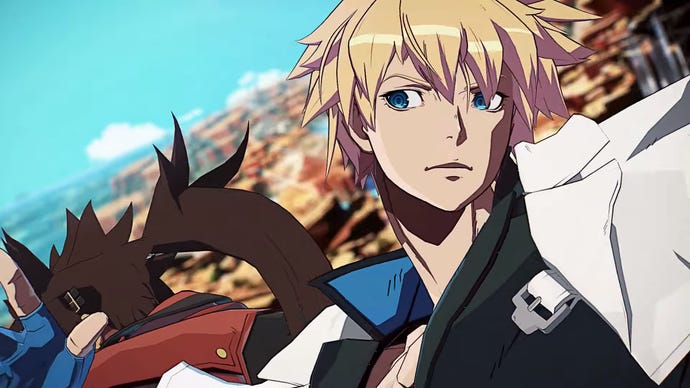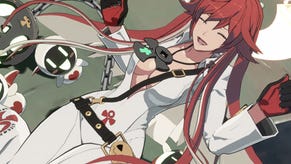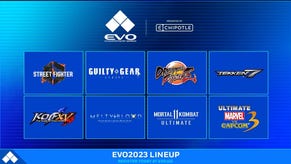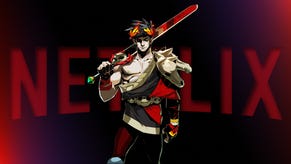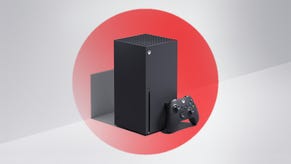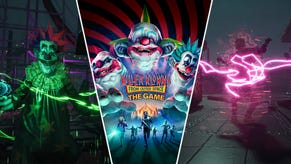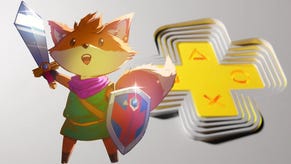The Guilty Gear Strive Interview: Why a Cult Favorite is Starting From Square One
The goal of Strive is to make everyone feel like a "newcomer."
This article first appeared on USgamer, a partner publication of VG247. Some content, such as this article, has been migrated to VG247 for posterity after USgamer's closure - but it has not been edited or further vetted by the VG247 team.
To the casual observer, Guilty Gear can sometimes seem impenetrable. It certainly requires a greater mastery of the game, in both concepts and raw mechanics, than most other fighting games—a genre that's already tough to breach.
But there's been a shift in those traditional dynamics. Off the back of smash hits like Arc System Works' Dragon Ball FighterZ and French Bread's underdog Under-Night In-Birth, anime-style fighting games have forged a foothold in the general fighting game space. More players than ever before are picking up the sticks, practicing combos, and even jetting off to tournaments like Combo Breaker and Evo.
With Guilty Gear Strive, Arc System Works' Team RED is rewriting the formula. It's been described from the outset as a "complete reconstruction" of the series. That doesn't always go over so well, though; there have been some mixed reactions to Guilty Gear Strive's first showing, ranging from optimistic to fatalistic.
We had the opportunity for a short email Q&A with Daisuke Ishiwatari, the father of Guilty Gear and current chief creative officer on the project. We wanted to know what it means to reinvent such a complex series after two decades, where to find a middle ground in the friction between newcomers and hardcore players, and how the artists keep making every Guilty Gear look so damn good. Here's what he had to say.
USgamer: What is your goal with reconstructing the Guilty Gear franchise? What pieces did you think were crucial to keep?
Daisuke Ishiwatari: We always reach for a degree of perfection when developing system mechanics and rules. However as a franchise, there are no goals we are aiming for. Trends of the era or player feedback generally tend to bring about change. That element of change could be called a "style" and the Guilty Gear Strive creates a big shift in "style" compared to existing titles in the series. I'm going to avoid mentioning any details here, but what we are trying to achieve is a title that can easily convey the excitement of battle not only with the players, but with spectators as well.
The philosophy that the Guilty Gear series should uphold is not the "style" that changes depending on trends. It should be something that will not change... it's very difficult to describe in a few words though. If I categorize Roman Cancel into "style" then there would be a possibility that it could be removed from our system one day... Anyway, I believe that answering players' ideas and time put into the games, along with a fresh take from developers, is what should be inherited in the franchise moving forward.
It's been two decades since the first Guilty Gear. How much has changed in your approach to making fighting games since then?
As you know, graphics technology and specs of video games have evolved rapidly in the past 20 years. Following its progress, our development scope also grew. We only had 5 core staff members for the first Guilty Gear, but now we have a team size of several dozens. Though the game quality has improved by dividing workload and adding more specialists on our team, now it takes more time and effort to convey the vision from the original creator. In the past, ideas and the work were directly connected in our small team, but it's a bit separated now.
The current staff are asked to have a deep understanding of the previous titles and be on the same page with the creator and accomplish development within a limited production time. I'd like to take this opportunity to reiterate my respect and gratitude to our staff's effort.
How important is the new player experience (i.e. tutorials in Xrd) to you, as the developer?
It's important to have content for new players, this is crucial not only for the Guilty Gear series, but for all games. In the past, paper manuals were always included in the game package and it was not rare to be lost on how to play without reading it. That tradition is basically extinct now. Some games may still have downloadable digital manuals, but I assume there isn't a high demand for that anymore.
These days, most of the games are designed for easy entry and a linear start. A tutorial and guiding beginners may seem like similar concepts, but they're slightly different. For fighting games, if a new player is instructed to learn the commands for more than ten special attacks before even beginning the game, they may never play.
For this reason, we did away with a typical tutorial you might find from Guilty Gear Xrd and tried to create one where players can actually "experience learning." And we believe that this feature needs to keep evolving. Moreover, what we should aim for is a game where more players can enjoy without needing to be tutored and one where they can feel joy becoming more knowledgeable about deeper mechanics.
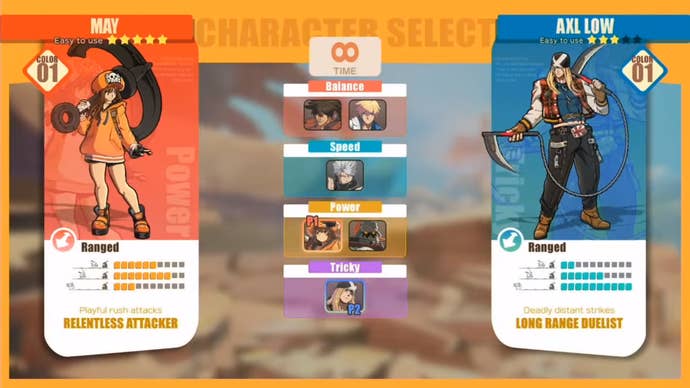
How have other Arc System Works games, like Dragon Ball FighterZ and Granblue Fantasy Vs., affected the way you look at Guilty Gear?
We were affected by those games both in development and promotional aspects. Information about development such as system, game design, and features of Dragon Ball FighterZ and Granblue Fantasy Vs. are always shared to TEAM RED (the dev team of Guilty Gear), as we regularly try to communicate with each other cross-departmentally. Those insights in those games influence a lot of the development of Guilty Gear Strive; for example, work allocation for graphic design, definition of target players, and online features.
The fighting game monetization model has changed a lot over the years. Has this affected the content plan for Guilty Gear Strive? Will there still be large content expansions, like Rev 2?
It would be very difficult to mention any content expansions at this phase of development. There are a lot of initiatives and trends we admire and would like to follow, however we believe that we should prioritize, one-by-one, completing what we can achieve.
How did you go about designing the look of the new Guilty Gear? What was your goal, with the visual redesign?
What we aimed for in the visual design of Guilty Gear Xrd was "3D that looks like 2D." To achieve this, we focused on depicting Japanese anime, and removed anything that doesn't exist in it. We reached a certain level of success, and we were also greatly honored to receive favorable reception from the players.
However, I venture to say though, we might have been running away from 3D. This time we'd like to take advantage of 3D fully, and develop the game utilizing its strength. We expect to improve the feeling of immersion for players in battle and create a "real" feeling of the background by using dynamic camera work and seamless transitions from special moves. We also try to revamp the quality of characters' animations and the details of their model designs.
Lastly, we seek the best expressions of the limited animation method at every point. There are no clear goals. We keep seeking the best possibilities and challenge ourselves toward achieving them.
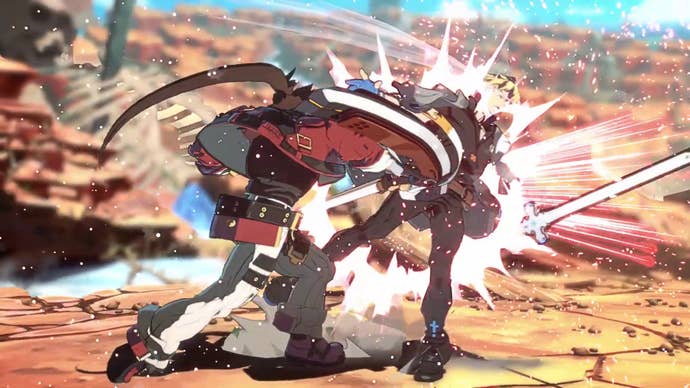
The UI has changed a lot. What do you hope to accomplish with these changes? How much is placeholder, and which parts do you feel are crucial to the new look?
The visuals that have been shown are still in development and placeholder. However, the general concept has already been implemented and tested in current appearance. The Guilty Gear series' UI has always had a metal-themed design, and we kept this impression as heritage. But, many of the game's concepts will be changed drastically. We needed to strongly set our mind to remove "traditional" Guilty Gear but "remodel" it in many instances.
One of the results is the new direction of the UI design. We started from scratch, taking into consideration gamers new to the genre, Guilty Gear fans, and other fighting games in general. We asked ourselves questions like, "Does the Guilty Gear battle screen have too much information?" Or, "Are we not giving enough information about each character on the character selection screen?" More importantly, we are aiming to create a game that has the ability to attract new users.
How have you felt about fan reaction to the gameplay you've shown so far? Are there any areas you're already looking at adjusting?
First, we are happy to hear that there is both positive and negative feedback on the current version of gameplay. We definitely appreciate those who have participated in the demo survey. This is a wonderful chance for us to obtain insight into the fans who love traditional Guilty Gear and users who are receptive to some of the new initiatives and concepts we are trying to accomplish with Strive. Though we are still in the middle of summarizing the result of the first demo surveys, we would like to keep the conversation going with users, including online based ones.
You've shown mostly familiar faces for the cast so far, with one new character. How large will the initial roster be? Are there any other fighters you're looking to bring forward?
My apologies, but I cannot really talk about this topic at this moment. "Something exciting" is always a goal for us to reach in creating both existing and new characters. Please look forward to it.
Some characters, like May, have obviously changed (grown up, for example) in the time between Guilty Gear Xrd and Strive. What's your goal in reimagining these characters? Were there any concepts that got scrapped?
On a story setting in the new game, not a lot of time has passed since the Guilty Gear Xrd series. While characters go through an iterative process, I already had a very good idea of where I wanted to take the design of each of the characters in Guilty Gear Strive. I wanted to take advantage of all the new technology available to us while improving on what we've done before. One of our main focuses was to make each character more expressive as well as increasing the visibility of their animations.
How do you balance appealing to newcomers with appealing to very hardcore Guilty Gear players, who might want a tougher barrier to entry?
We believe that the opposite word for "complicated" is not always "easy" for developing fighting games. Not to put too fine a point on it, Guilty Gear Strive gameplay can certainly be very "complicated" as users start to learn the nuances of the game.
As with other major fighting games, they may seem simple and easy to play, but high level play is usually for those who have played those games for a long time. The problem is that there is a great ability difference between players with and without carry over knowledge from previous games. Our general philosophy with Guilty Gear Strive is that we want every player who plays the game to be a "newcomer," so to speak.
This interview has been edited for clarity and brevity.
